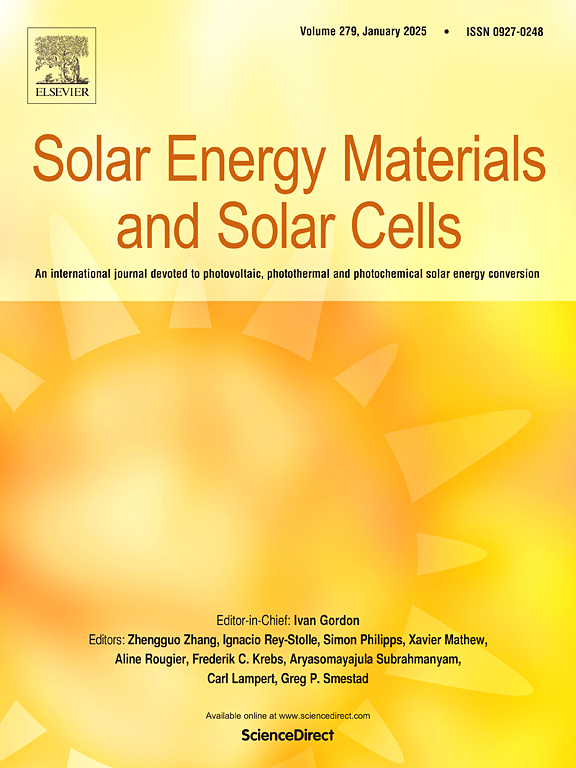Performance evaluation of a solar dish system with hybrid nanofluid cooling and sustainable thermoelectric power generation: Incorporating experimental property data
IF 6.3
2区 材料科学
Q2 ENERGY & FUELS
引用次数: 0
Abstract
This research presents a sustainable approach by integrating thermoelectric modules with solar dish systems to boost energy efficiency. The study investigates the incorporation of a thermoelectric generator (TEG) into a solar dish system, employing thin-film TEGs made from eco-friendly materials, specifically CTS (Cu2SnS3) for the p-type and CAFS (Cu0.85Ag0.15FeS2) for the n-type legs. Soda Lime Glass (SLG) and polyimide are used as substrates. A thermal resistance model is developed, and energy balance principles guide the derivation of equations to determine temperatures at the TEG's hot and cold sides, alongside the electrical current. Simulations were validated against experimental data, demonstrating good accuracy. The TEG geometry is optimized by adjusting leg widths, showing that the best dimensions for maximum power are 3 mm for the p-type leg, 4 mm for the n-type, and 1 mm for substrate gaps. To further boost voltage, multiple TEGs are connected in series at the solar dish's focal point. Cooling on the cold side is enhanced by a hybrid nanofluid channel (water mixed with Fe3O4-SiO2 nanoparticles). Results showed notable performance improvements, with solar irradiation increasing maximum power (Pmax) by 3.23 %. Additionally, increasing the hybrid nanofluid fraction (ϕ) with SLG substrates elevated Pmax by 1.95 %, while using polyimide instead of SLG under optimal conditions increased Pmax by 25.28 %. This study highlights the potential for integrating thermoelectric modules in solar dish systems to enhance efficiency and sustainability. The combination of eco-friendly materials and advanced cooling methods, like hybrid nanofluids, not only improves energy generation but also helps reduce environmental issues. These advancements support renewable energy technologies and contribute to process safety by minimizing dependence on non-renewable sources and utilizing innovative cooling techniques.

求助全文
约1分钟内获得全文
求助全文
来源期刊

Solar Energy Materials and Solar Cells
工程技术-材料科学:综合
CiteScore
12.60
自引率
11.60%
发文量
513
审稿时长
47 days
期刊介绍:
Solar Energy Materials & Solar Cells is intended as a vehicle for the dissemination of research results on materials science and technology related to photovoltaic, photothermal and photoelectrochemical solar energy conversion. Materials science is taken in the broadest possible sense and encompasses physics, chemistry, optics, materials fabrication and analysis for all types of materials.
 求助内容:
求助内容: 应助结果提醒方式:
应助结果提醒方式:


